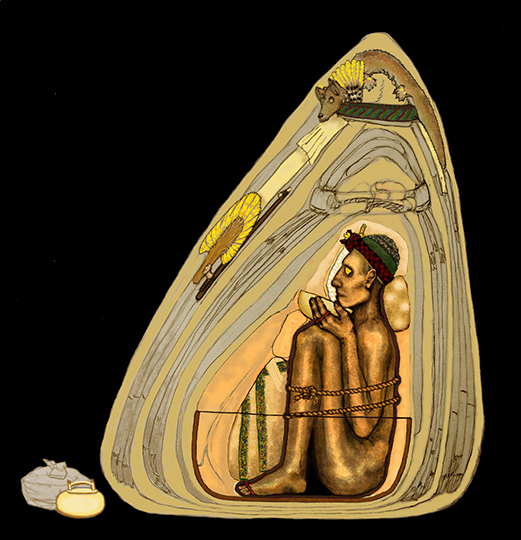The project “Practice in Life, Presence after Death: Style and Substance at the Paracas Necrópolis” is an interdisciplinary study of people who buried members of their social world at the Paracas site, located on the Pacific coast of the Andes in south-central Peru.
Peoples of the ancient Andes honored their dead by preserving their bodies, in this tradition placed in a seated position and wrapped in large cotton cloths layered with clothing and ornaments, tools and weapons. Containers and foods are often found at their feet. The larger, multi-layered bundles show us that these deceased people continued to play a role in the lives of their social descendants.

The Paracas site was excavated by a Peruvian team directed by Dr. Julio Cesar Tello Rojas, between 1925 and 1928. The mortuary bundles found intact were transported to Lima and later opened to be studied in museum environments. Many still remain unopened. Tello’s initiative established Peruvian-led archaeology, and he also worked with international researchers in both the initial excavations and the subsequent studies. His assistants and later generations have continued his work.
This project grew from dialogue between Peruvian and international researchers and staff of the Museum of Anthropology, Archaeology and History of Peru, including curators, conservators and archivists. We all sought to link the archival texts to the museum collections and create the conditions for a new phase of Paracas research.
This site is designed to provide an introduction to this project of restoring archeological context, describe further research that has sprung from it, and link to publications and other resources that may inform and inspire future projects.
